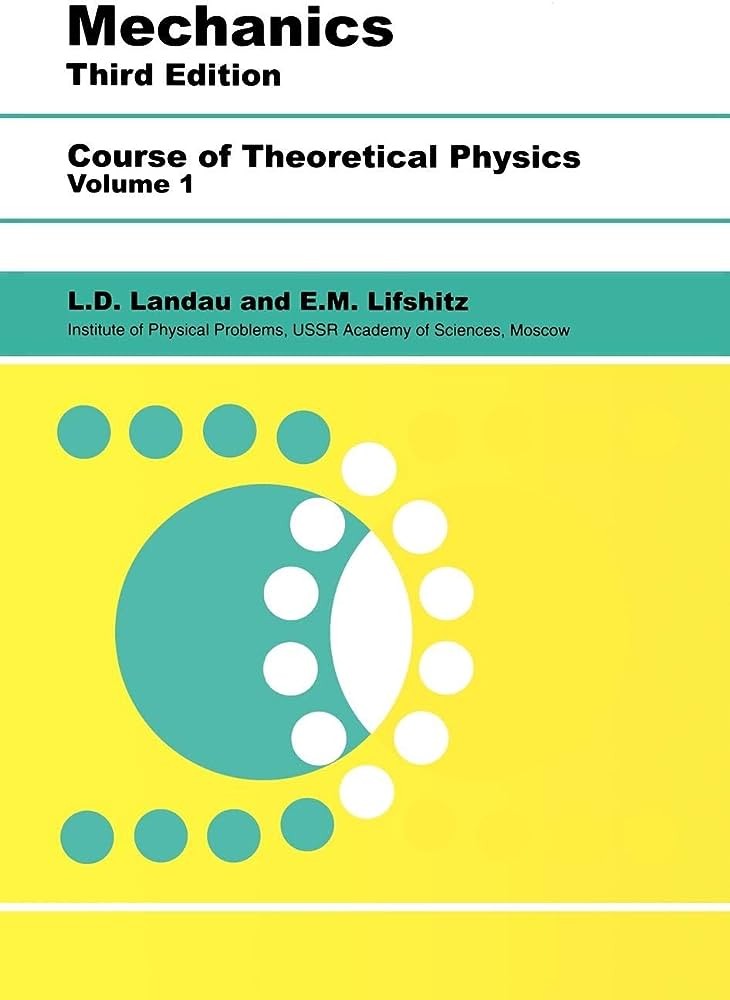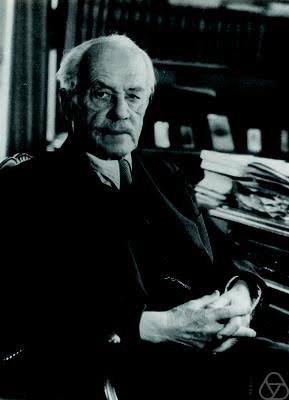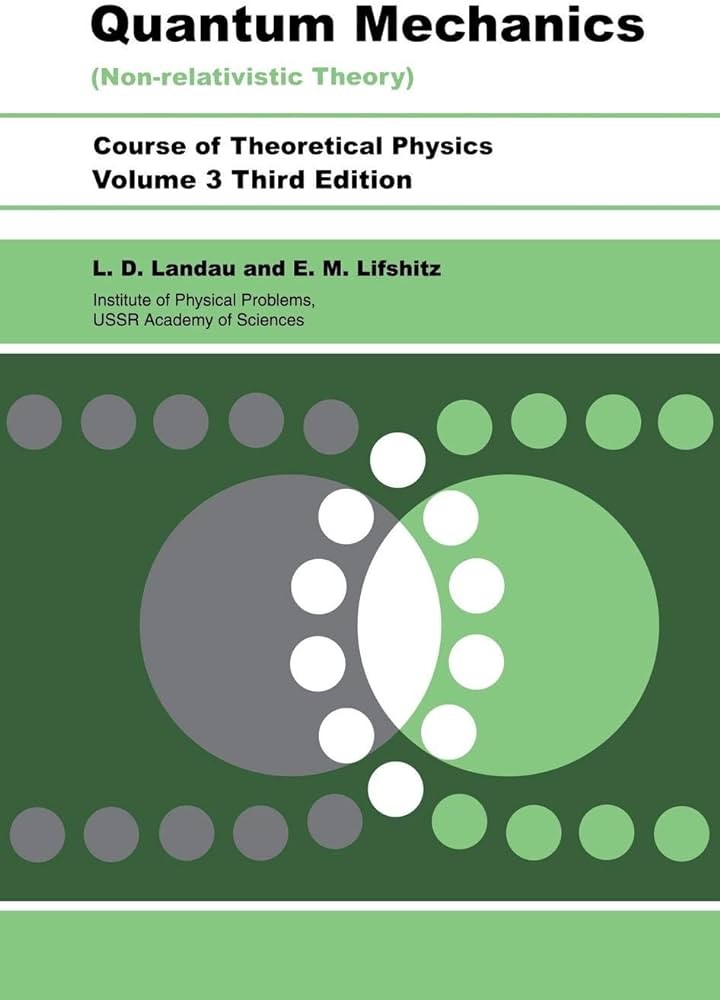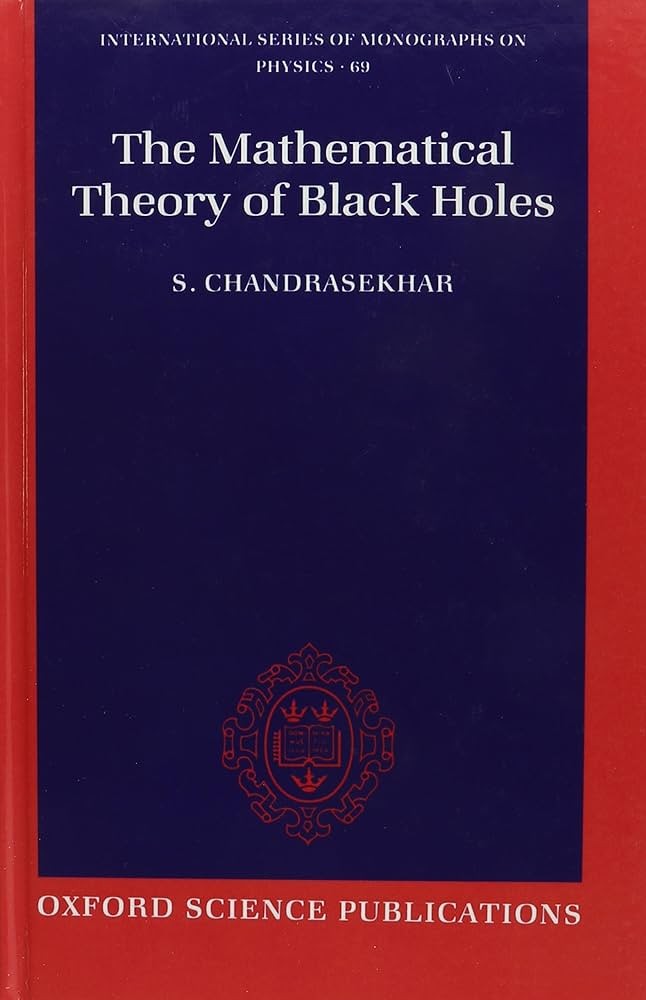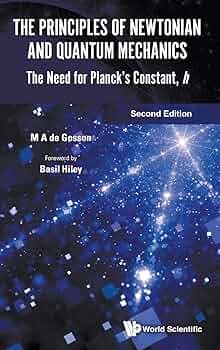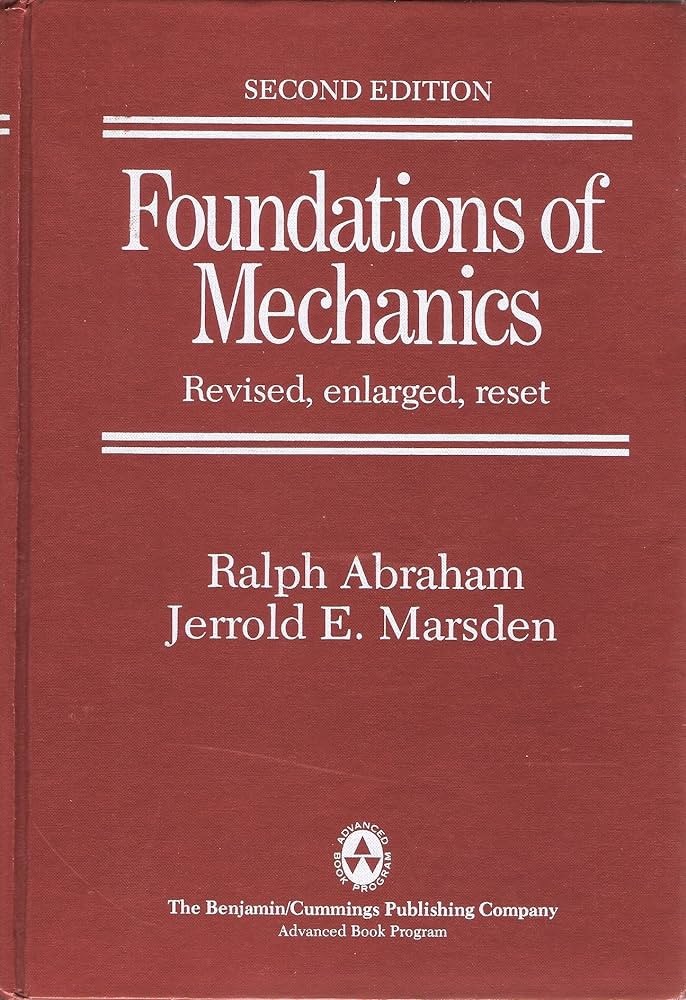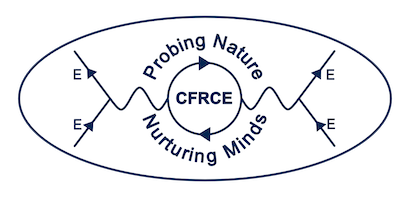CFRCE
From 9th Grade to CFRCE Advanced Learner's Program to Extraordinary Learner and Researcher
It is a prestigeous international conference in Classical and Quantum Gravity. Some of the deepest experts in the field are gathered together to discuss the most advanced frontier topics in the field. But there is something strange to be seen there. Surprisingly, a high school student is sitting in the audience. Perhaps she has sneaked in.
A closer look reveals that she is wearing the conference member badge. So she is a participant. Maybe she is attending the talks. But what is really striking is that after a short while the chairperson announces her name and invites her to come up to the podium. She walks up to it and is introduced by the chairperson as an invited speaker. He introduces her as follows:
"Today we have a very young speaker among us. She is Bharati Rajan, a 16 year old high school student in her 11th grade. She is from an international school in India doing her IB studies. The title of her talk is "Black Hole Information Paradox and Quantum Entanglement Entropy."
With complete command, the bright young girl Bharati Rajan (Name changed to protect identity and general publicity) thanks the chairperson, greets the members in the audience and begins to expound her work as presented in her paper, "Black Hole Information Paradox and Quantum Entanglement Entropy."
As she begins to speak the members of the audience soon forget completely the fact that she is only in her 11th grade at an IB international school. For, already, she has acquired the status of an expert on "Quantum Gravity and Black Hole Physics" due to her deep immersion in the field and her collaboration with several eminent physicists in the field.
Her beginnings in theoretical physics led to the time when she had first visited the Centre for Fundamental Research and Creative Education (CFRCE). She was in her 9th grade at one of the best schools at Bangalore, India. A few months earlier, she and another friend of her had been discussing about theoretical physics, their overriding passion. Her friend could somehow manage to keep herself at the top levels in academics but she herself was fast losing interest at everything happening at school. Not that she hated the subjects. She had a lively interest in several topics other than physics. She was a fine swimming champion, and a basketball player and an expert on the skateboard. She was a musician and a bharatanatyam dancer from her early childhood and was preparing for her arangetram to be held in a few months.
Noticing her restlessness and her rapidly declining interest in school, her mother decided to talk to her frankly, "What is it that you are disturbed about?" She asked her.
"Oh, it is not anything," the girl appeared to brush off her concern. Apparently, she herself was not quite sure of what it was that was troubling her. And then she tried to think through it. Perhaps her mother might have a clue to her predicament. "Mother...I am not sure what it is...but..." She started.
"Yes, go on, tell me whatever occurs to you...don't hesitate..." Her mother encouraged.
"Can you tell me why I have to go to school...everyday?" She asked.
Her mother was stupefied if not shocked. She did not know what to say.
Seeing her unable to reply, the girl added, "every day I go to school...I go to school...and sit in the classes...they, the teachers...all but read out from the textbooks...or some notes that they bring...they read out things that...make no sense to me... indeed to anybody, I think."
"What are you saying my child?" Her mother sighed.
"Yes, mother...it is true," the girl went on, "it does not make sense to anybody, at least to me...not because there is no sense in what they read out...but because, it is so grossly misrepresented...the topics...the subjects...often amounting to serious misconceptions, which as most students are young and unthinking, are likely to get embedded in their minds as potentially wrong ways of thinking. And the way the topics are presented is even more of a problem than the content. It is so monotonous and boring. It reminds me of what Einstein writes in one of his essays in his "Ideas and Opinions," especially the fact that we have the exams to write at the end of each term."
"What is that?" Her mother asked her.
"Just a minute, I will read it out to you. You will be able to appreciate what I am saying better." She went up to her table and came back with a notebook.
"One had to cram all this stuff into one's mind, whether one liked it or not. This coercion had such a deterring effect that, after I had passed the final examination, I found the consideration of any scientific problems distasteful to me for an entire year...It is, in fact, nothing short of a miracle that the modern methods of education have not yet entirely strangled the holy curiosity of inquiry; for this delicate plant, aside from stimulation, stands mainly in need of freedom; without this it goes to wrack and ruin without fail. It is a very grave mistake to think that the enjoyment of seeing and searching can be promoted by means of coercion and a sense of duty. To the contrary, I believe it would be possible to rob even a healthy beast of prey of its voraciousness, if it were possible, with the aid of a whip, to force the beast to devour continuously, even when not hungry."our quote here..."
- Albert Einstein
"But...are you saying you..." Her mother was unable to speak further.
"It is similar, mother," the girl nodded, "sadly, the situation with me is very similar to what Einstein says. Day by day, I have to sit in class and listen to topics I am not anymore interested in the least...topics I am not in the mood to give attention to. Perhaps I would have managed...if not for the growing sense of fascination I am having for theoretical physics. Yes, that is the main issue. I am preoccupied with topics that I think are supremely worth devoting one's life to. And in that state of absorption I cannot listen to what the teachers are droning about everyday. I don't mind hearing them but I cannot listen. And without listening, I cannot memorise the topics so as to write the tests and exams."
"But...my daughter...you are doing quite well at school...aren't you? In the last PTM (Patent-Teacher-Meet), they were happy with your progress...though they said that you seem a little distracted...yet they said you were respectful and obedient..."
"Yes, mother, sadly so," the girl smiled wearily. "It is natural they would think like that...because...though I am criticizing their teaching...I cannot but respect them...as human beings...as I do everything for what they are...and as to obedience...it comes to the same thing. I see that they are doing the best they can in the framework they are put into by the management. But that best is most pathetic...it is deplorable and debilitating...but something they can do nothing to better."
"But...if they realise it at least...something can be done..."
"No mother, nothing can be done...unless they can see the whole thing from a very different point of view. And to access that point of view...no it is just not possible for them...or for the management for that matter...it is no use complaining...for, to whom do we complain? There is no one who can do anything about this."
"So, what I am trying to do is...to concentrate my energies in learning all I can about theoretical physics...myself and one of my friends at school...though she is not that involved as me... yet she was the one who introduced me to certain topics of great interest to me now."
"Then why not continue to do that?"
"I am...but it is not that easy...the little that I am able to learn...especially from the videos on the internet...are not always rigorous...I am sometimes overwhelmed by the quantity of misrepresented writings...and unable to sift the chaff from the grain. And in a field like theoretical physics, one needs the company of like-minded thinkers..."
"That is why we moved you from the school with the CBSE syllabus to the International school with the IB syllabus. We even put you up with the best IB tutor to prepare you for the university admissions and the SAT and AP exams...but you stopped going to his classes a month ago..." Her mother reminded her.
"Mother...that place is no doubt good, very good in fact..but I am not happy even there...because there, the emphasis is only on what they call, "building a good profile and writing essays and solving problems." Granted they teach how to solve problems...but only in an algorithmic manner...certainly not in a thinking manner that I really enjoy. After a month and a half, I found it impossible to go there...so I finally stopped."
"Don't worry..." Her mother assured her, "I will try to find something for you...to pursue your interest."
"It is quite strange how little effect school—even high school—seems to have had on the lives of creative people. Often one senses that, if anything, school threatened to extinguish the interest and curiosity that the child had discovered outside its walls. How much did schools contribute to the accomplishments of Einstein, or Picasso, or T. S. Eliot? The record is rather grim, especially considering how much effort, how many resources, and how many hopes go into our formal educational system." - Csikszentmihalyi, Mihaly. Creativity: Flow and the Psychology of Discovery and Invention
Sure enough, after a week her mother came up to her and said, "I think there is a great place, a research and education centre...where you can find support. I was talking to Vishaka's mother. She told me of a "Centre for Fundamental Research and Creative Education," where they focus on the student's topic of interest and mentor the student in that, intensively."
"But…I don't want to go to another place to attend classes. Even if it is a research centre as you say, I don't want to lose time travelling. You know I hate travelling when I could be learning something. Already I am losing three hours going to school and back again. And I have my arangetram coming up."
"Ah, don't worry about that. You won't have to travel at all. I mean, CFRCE is an online platform, the members and mentors are all across the world. And they are not ordinary teachers but thinkers and researchers deep in the field of their interest. Vishaka told me that they have their own online platform with great resources."
The day after that they had a video call meeting with the Program Director of the "Centre for Fundamental Research and Creative Education (CFRCE)".
"This is my daughter, Bharati Rajan" the girl's mother began, "She...is deeply interested in physics, it is her overriding passion..." She turned to her daughter prompting her to speak.
"I am interested in theoretical physics," the girl said, "I have been reading up on Calculus and watching some videos on the internet..."
"Theoretical physics?" The Program Director was pleasantly surprised. "Do you mean, theoretical physics...or physics..."
"Yes, theoretical physics..." The girl affirmed and continued, "I want to learn more on Quantum Electrodynamics...to begin with."
"Quantum Electrodynamics!..." The Program Director wanted to confirm. "Yes, Quantum Electrodynamics..." The girl was certain.
"Have you come across Classical Electrodynamics?" The Program Director asked.
"I have," the girl affirmed, "but I could not actually learn it as…it required Vector Analysis…and I read about it a lot…especially how an accelerated electron radiates…I mean, I am familiar with what it is but yet to really learn it in a serious manner."
"What about Classical Mechanics?" the Program Director asked.
"I have read about it also, especially on Lagrangian and Hamiltonian Mechanics. But again, I am yet to learn it in a serious manner. Here, let me share the screenshot of the book I am trying to read." She turned to her mother.
Her mother helped her to open the ebook and share the screenshot.
"Lagrangian and Hamiltonian Mechanics!" The Program Director remarked, with great appreciation.
"Yes, I am trying to learn about both...I kind of understood up to what a Lagrangian is...I think...it is the difference of the kinetic and potential energies…"
In a short while the Program Director was sure that the girl really meant theoretical physics...and was earnest in going deep into it. He suggested that the girl submit the application form for the CFRCE Advanced Learner's program along with a brief Statement of Purpose (SOP).
In a week's time the girl Bharati submitted the application form along with the SOP. Reading it the Admission Board was impressed. It showed clearly that the girl was earnest and her interest and passion very strong. She was soon enrolled in the CFRCE Advanced Learner's Program.
It was her very first day and Bharati, the young theoretical physicist in the making entered the CFRCE online platform. She had been assigned three mentors the first of whom was from the University of Maryland, USA. On the orientation video call her mentor personally acquainted her with the nature of the platform and the incredible resources she could access the deeper she delved into her topics. She encouraged the student to feel free to ask and clarify anything she wanted to, as at this Centre, the student would be the one who would take charge of her own learning, the mentors being facilitators and not teachers or instructors. Knowing about the particular methodology would be part of the mentoring process and it would help to understand that before proceeding. The mentor asked Bharati to take a few minutes to get a feel of the platform.
Bharati began exploring. The platform was unlike anything she had seen before. There were research groups on a host of exciting topics including her field of interest. As Bharati seemed to be extremely eager to start, the mentor spoke, "I am aware of your great passion for theoretical physics and that you want to learn Quantum Electrodynamics seriously. For that it is best to begin with Classical Mechanics. If I may ask, which book have you been studying so far?"
"I have been looking up some MIT courseware and some videos, not any book in particular," Bharati replied, "I have heard that Goldstein's book is the best on Classical Mechanics...and Jackson's for Classical Electrodynamics."
"No doubt you have heard right..." The mentor agreed, "Those books are certainly the standard books...but not the best...for a beginner to learn."
"Which book would you recommend then?"
"I suggest you begin this book here," the mentor shared a screenshot. "It is Landau and Lifshitz's 'Course of Theoretical Physics,' Volume 1, Mechanics. At CFRCE, this is the book most students of theoretical physics begin with. And as preparation for this book, you can browse and work through certain chapters of this book, 'Theoretical Mechanics.' Parallelly, you can complete your learning of Calculus. And here is a list of other books for you to get hold of, either the ebooks or actual books depending on your choice."
"I prefer the ebooks as I can read on my iPad. I will get hold of them and start working on the first book you suggested," Bharati said.
"And we'll continually interact as you proceed with the reading. You can get back to me," the mentor encouraged.
"In how much time should I get back for the discussion?" Bharati asked.
"In as much time as you want. Take your time and get back to me," the mentor said.
Soon, Bharati got hold of all the books. She browsed through the first book excitedly. She wondered looking at the short book of Landau and Lifshitz on Mechanics. She was surprised and happy to note that she could actually work on the book without any interference. At school or at the IB tutor's group she had stopped going to, such a thing was impossible. Someone or the other was always interfering, monitoring or disturbing the students from their train of thought both in the physical classes and also online. Here, on the contrary, she could sit down and dream on her favourite topics and actually work through them.
And the mentor would intervene and not interfere, and inspire and encourage and guide respecting the student's time. At other times the mentors played the role of learners no less than the students.
At this Centre, everyone were learners. Soon, Bharati was completely absorbed in working through the books she had been suggested under the guidance of the mentor. The mentor structured the whole experience like a detective work, never answering any query or question directly but suggesting, nudging, providing clues so that the student could discover the answer for herself.
Sometimes, Bharati was stuck but even this the mentor made it as an opportunity to breakthrough towards the answer, however difficult it might have seemed in the beginning. Bharati felt a deep sense of flow and a serene joy emerging as she tackled the equations in the book with the help of the mentor. She found herself becoming increasingly independent and going through the topics at great speed. Surprised at this she asked her mentor.
Her mentor spoke, "There is another student, Akshata...who is also into physics, into High Energy Astrophysics. You may find it interesting to meet her. I will message her and introduce you both." Soon, the mentor introduced them. The two students began to have a call and converse briefly .
"I am into High Energy Astrophysics," the other student Akshata, said, "I am working through Landau and Lifshitz's 'Fluid Mechanics,' as it is very essential for understanding this book by the great physicist and astrophysicist Subrahmanyan Chandrasekhar on Stellar Structure. Landau and Lifshitz's book is the finest on fluid mechanics. The other books were all quite boring but this one is thrilling."
"Oh, the same with Mechanics," Bharati spoke, "I encountered Landau and Lifshitz's book on Mechanics only recently but already I find it so interesting that I can easily agree with you."
"Which grade are you in?" Akshata asked.
"I am formally in my 9th grade, what about you?"
"I am in my 10th", Akshata said, "I joined the CFRCE Advanced Learner's program last year when I was in my 9th grade. I had been so longing to study Astrophysics. I was in India at that time. Now we are at Australia. Anyway, as CFRCE is an online platform, the location hardly matters. One of my mentors is from UCLA and another from Stanford University and I am now deep into my favourite topics."
"I just started a few weeks ago," Bharati said, "already I am feeling the thrill in learning my favourite topics in theoretical physics. And it is so nice that at CFRCE, we can actually work through serious books guided by the mentors, not listen to lectures sitting in a class."
"Yes, that's the great thing about this Centre," Akshata agreed, "that we can work on out topics directly. And at our own pace! It is active learning."
"But conventionally, this is unthinkable. Imagine, as my cousin tells me, even at the Bachelor's degree level you are given topics like spectroscopy, atomic and nuclear physics and so many so-called basic physics subjects. No one would imagine starting off with theoretical physics especially from the Landau and Lifshitz course, and moreover by students at high school."
"Yes, that is so, and possibly only because I think at this Centre, they have truly understood something deep and profound."
"What is that?"
"It is best conveyed by two points of view that people seem to have generally. My mentor explained it to me"
"Could you please elaborate?"
"Let me tell you an anecdote that my mentor told me. It is about Werner Heisenberg's entry into research. When Heisenberg was a young high school student, he was very passionate about theoretical physics. He was so eager to do real theoretical physics that he approached his father and asked him to help him find a mentor. His father was not an academician but recalled having known a friend of his who was a well known mathematician, Lindenman.
Lindenman was not just well-known, he was reputed to have given a proof of the transcendence of pi. So Heisenberg's father arranged a meeting with him for his son. Heisenberg went to meet the great mathematician at his office. The mathematician was already outraged at what he thought was the impudence of a high school student wanting to do research right away before going through the formal academic ladder.
More as an obligation to his friend he agreed to meet his son. After a long wait, the young man was told the mathematician would meet him. Before even Heisenberg could tell him about his studies in physics and mathematics, the mathematician gave him an earful of what he thought was a ridiculous idea, to start on research before the formal academic climb. He strongly advised Heisenberg to stop his foolish attempts at theoretical physics, wait patiently for a decade or so and then approach him with due qualifications, possibly the equivalent of a Bachelors degree if not a Masters. He then dismissed Heisenberg.
Heisenberg returned back home disappointed and distressed. Seeing him in that situation his father recalled having another friend by the name Arnold Sommerfeld, a professor of theoretical physics at the university of Munich. Heisenberg, somewhat ruffled by his previous encounter with the mathematician, hesitantly went to meet with the professor of theoretical physics. Immediately he reached the professor's office he was assured into his presence.
The professor greeted Heisenberg with a warm smile and asked him the purpose of his visit. Reassured by the professor's words, Heisenberg told him everything, his great passion for theoretical physics, his attempts to learn the fundamentals, his readings of current research and his attempts to find a mentor.
The professor was surprised and happy at Heisenberg's keen aspiration and his endeavours towards research. He congratulated and encouraged him and said that it was a great idea to be wanting to do research from the high school stage itself. He invited him to join his research group then and there and start coming to his institute from the very next day."
Akshata paused and said, "What this anecdote conveys is that it is possible to have opposite views about when to enter research. When one is curious, excited, fascinated and in earnest as at high school or after a long process of going through formal studies that except for building up so-called background, has little to nurture the curiosity, interest and passion so that by the time one is actually at the Masters level, one is more burdened by so many extraneous demands, social pressures etc? One could easily argue for either. It is all a point of view. Conventional education takes the latter point of view, this Centre the former.
Now, conventional education works more to satisfy requirements of the university, the curriculum etc. This Centre is not concerned with any of that but only to empower learning of whatever topic the student is really passionate about. This Centre is fiercely independent, not affiliated with any university, does not accept funding, grants or donations. Therefore, it is concerned only with nurturing the pure joy of learning in the student.
The students selected for the CFRCE programs are driven by their interest, passion and sense of purpose. In fact, only students with such a sense of purpose are selected. For example, one of my friends wanted to join the program. She even wrote a very good SOP but could not make it. Her interest and passion was found to be insufficient for the program requirements. So, once the student has sufficient interest and passion, the extraordinary methodology that this Centre has evolved, takes the student rapidly ahead. While yet at high school, the student goes beyond the postgraduate and doctoral levels, consistently, year after year. It may appear miraculous. And it is not even necessary to be a so-called talented student! Indeed, there have been many so-called average students who are now at extraordinary levels of learning and taken as geniuses. The fact is, talent and genius has nothing to do with extraordinary learning. After all, that is what the examples of Faraday and Einstein tells us, isn't it?
But as they say at this Centre, the really miraculous thing is how conventional education fails to recognise the tremendous potential every child has and manage to keep them at abysmally low levels of learning by forcing them to engage in rote learning and passing exams that have no relevance to either their interest or passion nor of any value for the real life they are challenged with later on."
"Wow, that's great, the way you put it," Bharati said, "How did you get to know so much about the philosophy of CFRCE?"
"The same as you also will, soon enough. As you begin to experience the powerful way in which you will cover topics rapidly, you cannot but absorb the philosophy and methodology and feel eager to convey it to all earnest students you will come across. That is how the culture of learning gets transmitted at CFRCE. It is a ripple effect."
"I am beginning to see that," Bharati agreed, "The great thing is that we can focus on what we are interested in. At any other educational centre, you are told what to study, how to study, when to study, without consideration of your feelings. And as you pointed out, it is all a point of view. Who really decides that the conventional curriculum and syllabus is right or meaningful? Perhaps someone did that sometime in the past and it is being carried out without thinking."
"Yes, that is so," Akshata said, "and since no one questions it, it goes on. But here, it is very different, they don't make it so cumbersome. It is upto each individual to decide what one wants to learn. After that, they show you how to learn in the most effective manner specific to that subject or topic. They don't get into the why and what so much as the how. In that sense, it is completely scientific as it is the path that is important. The destination is something the student chooses with full independence and autonomy.
For instance, you are starting Classical Mechanics from Landau and Lifshitz's book. Conventionally, as I have known from my cousin who has completed his Master's in Physics, no one starts like that. It is quite a long way from Newtonian Mechanics as taught at high school to Classical Mechanics at the Bachelor's or Master's level. By the time one gets to the real stuff, one has already lost much of the enthusiasm and interest especially after listening to the boring lectures. And if they hear how you are starting, they would laugh and ridicule the approach calling it foolish and immature and misguided. But I am sure, in hardly two month's time depending on your motivation, you will emerge completely mastering the topic. And if you and a conventional Master's degree student are brought face to face...well...let's find out after the results..."
"Sure," Bharati said. She thanked Akshata for the nice conversation. Opening the book again, she felt strange. It was as though in the brief time she was talking to the other student, the topics she had worked through appeared to have settled nicely in her mind. She turned to the next chapter, and as she did so she saw that her mentor had messaged, "Always Make it a Point to Go to the Masters, Read the Originals."
On another the video call, the mentor smiled and explained, "At this Centre, we consider it more important to avoid reading bad books, that is, books from second and third hand sources than reading books by great masters. As far as possible, only books carrying the spirit of the leaders and pioneers of the fields are kept. If by chance a book by a second hand source is found, it is immediately removed.
You see, just as it is more important to avoid listening to lectures by bad teachers so also it is important to avoid books written by those without the spirit of discovery, without a sense of purpose. Such books leave a disempowering feeling in the student.
Language is the most powerful instrument of thinking. So one should never let disharmonious language enter one's mind. In this way, the mind rises higher and higher in intellectual and cultural eminence. And after all, isn't that the real purpose of learning, to evolve, to be an enriched, enlightened and ennobled human being?"
Bharati wholeheartedly agreed. She reaffirmed her conviction that greatness was often exhibited in the smallest details.
As she came out of her room, seeing her glowing face, her mother was very happy. "How is it going?" Was all she could ask her.
"Oh...it...is...just great! So exciting! It's absolutely fascinating!...I cannot tell you how I feel...I can't believe I completed two chapters of a book on Classical Mechanics. I have never been able to learn so fast before," She said.
At another meeting with the mentor Bharati was curious to clarify the meaning of the Lagrangian. Soon, she was deep into discussion with her mentor. The mentor introduced her to the intricacies of the Calculus of Variations in a very novel manner. At the very beginning she asked Bharati,
"What do you think is the essence of Classical Mechanics?"
Bharati thought for a while and replied, "I think that of finding the path of the particle by integrating the equations of motion given the form of the force."
The mentor was happy. "That's very aptly put," she said, "now, if we are to generalise this, it comes to this that given an initial point and a final point, there are a family of paths connecting the two points. Suppose there is one path that is an extremal, a minimum or a maximum. You find the equation that gives you that path. This is the necessary condition for an extremum. It gives you the geodesic equation."
"But...doesn't the geodesic equation come in Riemannian Geometry?" Asked Bharati.
"Oh, it is nice that you know that," the mentor said, "Yes, it does come in Riemannian Geometry. But essentially it is the same thing. So also, if you have observed, the coordinates that are absent in the Lagrangian give rise to conserved generalised momenta. If you have read more on Riemannian Geometry, you would have found that when a coordinate is absent in the metric, there arise vector fields that are known as Killing vector fields and give rise to conserved quantities when multiplied by a geodesic vector field. But I will leave it to you to explore the connections further. This is the way we approach theoretical physics at this Centre. If you are curious to know more about this spirit of connecting topics, I suggest you read V I Arnold's beautiful interview in the 'Notices of the American Mathematical Society,' and J E Marsden's preface to his book, 'Lectures on Mechanics.'"
Bharati nodded, happy and excited at the discussion. She had only read in the biographies of physicists and mathematicians about these kinds of discussions and conversations. Here she was experiencing it. It was a living culture of learning and research that prevailed at this Centre. She thanked the mentor and continued to work at her topics.
After half an hour she found herself thinking on her discussion with the mentor. Something seemed to be incomplete... what was it? She decided to talk to the mentor. She messaged her and on the call, said, "As you were telling me about the geodesic equation...I felt there was something that you were about to mention but did not. I am not sure what it is...and am sensing something missing..."
"Ah, that's really nice," her mentor said. "It's really nice because that conversation left an incomplete experience in you and it was deliberate. An incomplete experience, as the Director likes to say, is something that leaves a lingering feeling for closure...to look for completion. And often, it motivates you to arrive at the solution yourself than if someone were to explain it to you. But of course, one must know how to leave the experience incomplete in the right manner, for, if not, it could leave a sense of difficulty rather than a challenge. This is what happens at school and college. That is why, after a while, students lose interest and motivation in their studies.
You may wonder why I am telling you all this. It is because the kind of learning you are going to be engaged in is not ordinary learning but what is more appropriately termed meta-learning, learning to learn. For that it helps to know how learning happens. Once you grasp the meaning of an incomplete experience, you will be able to channelize it for yourself in all aspects of your learning. And as you begin to do that you will find everything serving to illuminate your learning including your sleep and dream states no less than the waking state."
"Oh, what is that incomplete experience you intended?" Asked Bharati.
"That is for you to figure out...it is incomplete precisely so that you find it out..." The mentor prompted her.
"I think I have figured it out a little...but I am not quite sure..." Bharati said.
"Go ahead..." The mentor encouraged.
"I think you mentioned the necessary condition for an extremum...but left out on the sufficient condition..." Bharati ventured.
"Exactly!" The mentor beamed, "Yes, that was what I wanted you to guess, the sufficient condition."
"And I think the sufficient condition consists in finding the second derivative of the Action...just like in ordinary calculus," Bharati spoke.
"Certainly," the mentor agreed, "It is known as the second variation. And if you are dealing with the geodesic equation, the second variation gives you the geodesic deviation or the Jacobi equation that tells you how two geodesics move away from each other progressively. This equation is so significant that once you know how to deal with it you can do a whole lot of calculations. In General Relativity, it comes in the guise of what is known as the Raychaudhuri equation. You can consult the beautiful book of Hawking and Ellis, 'The Large Scale Structure of Spacetime.'"
Bharati thanked the mentor and returned to her work.
After five weeks, she told the mentor beaming, "I have completed Landau and Lifshitz's Mechanics book. Which book do I take up next."
Her mentor was pleasantly surprised. She had expected that Bharati would take two to three months at least. But one month and a week was really fast. She suggested Bharati to take up the second Volume in the Landau and Lifshitz course, 'The Classical Theory of Fields.' She oriented Bharati a little about the nature of the book.
"This book is most unique, in fact there is no other book like it even today. There is only one another book that comes close but it is quite advanced. That is a nice book by A O Barut, 'Electrodynamics and Classical Theory of Fields and Particles.' You will find this book thrilling to the core. The way it treats Electrodynamics is wonderful. It is perhaps the only book that deduces electrodynamics straight from Special Relativity. You will find Maxwell equations emerging in a unified manner. But you may need a little preparation. I suggest you read the Feynman Lectures on Physics, Vol 2, in parallel."
"I am already familiar with that book," Bharati said.
"That's great," the mentor remarked and continued, "After you complete the sections on electrodynamics in this book, you will encounter General Relativity from the classical tensor calculus point of view. After that you can start learning modern Differential Geometry and Topology for an up to date approach.
And as you are working through General Relativity, I suggest you keep an eye on the symmetries and Killing vector fields you will come across. You will notice many further connections with Classical Mechanics, especially when you come to the Kerr metric, you will find the Hamilton-Jacobi equation suddenly come alive. You will see that the Stackel conditions you have come across in the separability of the Hamilton-Jacobi equation becoming very significant.
This aspect will of great relevance in Geometric Quantization later on. If you are curious, you can look up the book by N M J Woodhouse, 'Geometric Quantization,' and S Chandrasekhar's beautiful article, 'An Introduction to the Kerr Metric and its Perturbations,' in Hawking and Israel's 'General Relativity, an Einstein Centenary Survey.' Morse and Feshbach's book, 'Methods of Theoretical Physics,' treats the Stackel conditions and possible coordinate systems in which the Hamilton-Jacobi equation becomes separable.
And I am sure you will be intrigued to know that the Kerr geometry is quite unique in that the Hamilton-Jacobi equation becomes separable, along with a host of other equations of mathematical physics like the Dirac equation."
Bharati nodded, happy to have been given the nice connections by her mentor. She was beginning to enjoy this style of learning that seemed to pass into research even as she was mastering the basics. Perhaps that was one of the secrets to the rapid learning that students at this Centre engaged in.
Bharati went back to her work. Next week she messaged his mentor with a query, "what really is the significance of the delta variation in the Action principle? It does seem to be similar to the usual maxima and minima but as they state, it has to do with functionals..."
"Yes, that is so," the mentor affirmed, over their video call, "However, the way it is presented by physicists obscures its real meaning. Let me show you a different approach."
She guided Bharati to work out the details. Bharati was thrilled and wanted to know more about the approach.
The mentor said, "I suggest you look up three books, Jurgen Jost's 'Riemannian Geometry and Geometric Analysis,' A Avez's 'Differential Calculus,' and Choquet Bruhat et al's Analysis, Manifolds and Physics. I think the first book is the most accessible one, so you can check it out."
Bharati consulted the first book suggested and was pleased to find a fine treatment of Variational Calculus that clarified the meaning of variations very much. As she could not get hold of the second book easily, the mentor clarified how the proper setting for the variational calculus was not in metric spaces but in what was known as normed linear spaces or Banach spaces.
And to rigorously do differentiation, one needed a further refinement known as Frechet spaces. But for this it was best to get a little background from General Topology up to the concept of compactness and paracompactness. The third book proved to be a bit more difficult at the moment and so Bharati skipped it making a note to return to it a little later.
Around a month later, Bharati completed the second Volume. She had now a very good knowledge of Classical Electrodynamics, Field Theory and General Relativity. Happy with her progress, her mentor suggested her to take on the third volume in the Landau and Lifshitz series, 'Quantum Mechanics.'
"Actually, this book is not exactly that modern," the mentor said, "But as with the first two volumes of Landau and Lifshitz, it carries the great spirit of research methodology. And moreover, after enjoying the first two volumes, you would surely want to have more of it. That is why I am suggesting you the third volume. After going through it you can anyway take on a more modern book. Also, the beginnings of quantum mechanics has been presented in a unique manner in this book. Lev Landau and Rudolf Peierls were one of the first to examine the role of measurement in quantum theory. They looked at the uncertainty relation in the relativistic context also. Later, Peierls generalised the notion of the poisson bracket into a covariant version now known as the Peierls bracket. This has been very well treated in Bryce de Witt's book, 'The Dynamical Theory of Groups and Fields', an outgrowth of his Les Houches lectures, and later presented in his two volume monograph, 'The Global Approach to Quantum Field Theory.'"
As Bharati listened to the mentor she had a flash of understanding. She realised that every time she interacted with either the mentor or another student, she would come away with some piece of valuable connection, an anecdote or insight. And that would spur her on to explore further. Indeed, each time she had such an interaction, she went back and dug up information on the topics alluded to and always that led her to some further connection.
Her notes were rapidly piling up with new connections and revelations. No wonder she found her dreams filled with strange streams of insights that she later verified to be leading her on to depths of learning not possible otherwise.
It was around four months since she had started out and Bharati had now completed the third volume also. In parallel, she had learned most of the mathematical methods of physics including Ordinary and Partial Differential Equations, Complex Function Theory, Special Functions, Fourier Analysis and Eigenvalue problems.
Even before her mentor suggested, she had already chosen her next topic. For some time she had been aware that her mentor was working on a research problem known as 'the problem of time in quantum gravity.'
It was a research problem that had been pursued by the Director Dr. B S Ramachandra who had guided his earlier student Vasudev Shyam towards a mathematical formulation of Shape Dynamics. Bharati's mentor had later become interested in the same topic and was pursuing its further ramifications. Whenever the mentor had talked to her in passing, Bharati had picked up some idea about it. And now she was gripped with the topic and wanted to explore more. Her mentor sensing it said, "I am thinking of suggesting you to take on two topics, one a more modern book on quantum mechanics and two, a book on Quantum Field Theory. But I suppose you have now formed your own idea on what you would like to tackle next."
"Yes...a little...," Bharati said modestly, "I am thinking of exploring 'the problem of time in quantum gravity,' that you are working on alongside both the topics you suggested. I have seen the paper that Vasudev Shyam and Madhavan Venkatesh published on the topic and the later two papers Vasudev Shyam and Dr. B S Ramachandra published. I was really curious and tried to read them but found that I needed a lot of background."
This came as a pleasant surprise to the mentor. She readily agreed and suggested certain preliminary review articles and papers for the student. In particular she asked her to look up a very nice collection of articles edited by Ehlers, 'Canonical Gravity from Classical to Quantum.' "You will find two articles of great relevance," she said, "one by R. Beig, 'The Classical Theory of Canonical General Relativity,' and the other by Domnico Giulini, 'Ashtekar Variables in Classical General Relativity.' And for background in Differential Geometry you can consult Choquet Bruhat et al, 'Analysis, Manifolds and Physics, Vol 1.'"
Bharati nodded and started to work on these new topics. She was already beginning to feel the thrill of research. Her notes had grown enormously and were piling up with insights. As she sat in her classroom at school, her mind was completely lost in theoretical physics. She found that even when she was in sports, music or dance, a part of her mind seemed to be immersed in her research. She was mastering theoretical physics at a dizzying pace covering topics in weeks that normally took years. She delved into modern differential geometry and topology. She was fascinated by the beautiful methods of differential forms, manifolds, connections and curvature, vector and fibre bundles and the Carton structure equations. She recalled a conversation she had with her mentor. She had just completed calculations on the Schwarzschild metric and thrilled with solving the Einstein field equations, had come up to her mentor and said, "I finally completed these calculations. It took me two and a half days to get all this done. I wonder if there is a faster way."
Her mentor smiled and said, "Of course, there is...a much faster approach...but for that you need to master modern differential geometry, especially differential forms and the Cartan structure equations. With that you can do these calculations in less than half an hour..."
"What?" Bharati was stunned.
"Yes," the mentor assured her, "You can find this out for yourself."
And it had come true just like the mentor claimed.
"I could have learned this approach earlier, without having to go through the old-fashioned tensor calculus way..." Bharati said after doing the calculations with the new modern methods.
"Of course, you could have..." The mentor agreed, "but I wanted you to be aware of the old-fashioned approach also. Nowadays, most students miss the path of creativity and discovery. Many students don't even do calculations by hand but program it on the computer or by packages like Mathematica. Doing so they miss out on valuable insights to be gained only by being aware of the historical development of the subject."
By and by Bharati was becoming a researcher. She swept through topics like Algebraic Topology, Lie groups and Lie Algebras, Homological Algebra, Characteristic classes and Index theory.
Around this time, her mentor told her, "It is a good time to look into some Symplectic Geometry and Geometric Mechanics. I suggest you go through this beautiful book by Maurice de Gosson, 'Principles of Newtonian and Quantum Mechanics.' In parallel, you can look up Arnold's 'Mathematical Methods of Classical Mechanics,' and Abraham and Marsden's 'Foundations of Mechanics.'"
"I have already studied Arnold's book. But I will go through Maurice de Gosson's and Abraham and Marsden's," Bharati said. After three weeks she spoke to the mentor and said excitedly, "de Gosson's book is terrific. I am almost through seven chapters. I was so happy to work through it."
"That's nice to know," the mentor said, "After working through if further, you can take a look at Abraham and Marsden's book a little. It is perhaps the most complete book on Symplectic Geometry. And of course, as you said, de Gosson has a great style of writing. And he is extremely prescient and clear in his views. He is a great master in that he goes directly into the heart of the subject. His book is one of the very few that really delves into the foundations of both Newtonian and Quantum Mechanics. Along with the books, his papers are very illuminating."
Bharati took leave of the mentor and continued to learn from the suggested books and papers. Soon, she was ploughing deep into the problem of time in quantum gravity. She was fascinated by the ADM formalism, particularly with the way in which the covariant yielded to the canonical.
But she also felt that the split into 3+1 was spoiling the inherent meaning of diffeomorphism invariance. Was there any other way that did not single out time and yet could lead to a canonical version? Perhaps there was a covariant-canonical approach. As she developed the instinct to follow through her own hunches, Bharati looked up a variety of approaches that did this. She found to her surprise, quite a number of papers dealing with the issue. She spoke about this to her mentor.
"I came across this series of papers by Kanatchikov in which he develops what he calls a polysymplectic formalism..."
"I am familiar with that," her mentor told Bharati, "But Kanatchikov's introduction of the polysymplectic form does not appear well motivated physically. Nevertheless, his papers are very instructive. As you are so interested in this issue, you can take a look at an article by H A Kastrup in Physics Reports, 'Canonical Theories of Lagrangian Dynamical Systems in Physics.'"
Bharati looked up the article and went through it. Her mentor then suggested her to read Caratheodory's reformulation by E Cartan of the Hamilton-Jacobi formalism as presented in Robert Hermann's book, 'Differential Geometry and the Calculus of Variations,' followed by a series of beautiful books and articles by G Sardanashvily and his school. Gotay, Isenberg, Marsden, Montgomery, Sniatycki and Yasskin's GIMMSY article, "Momentum Maps and Classical Relativistic Fields," and of course, Isenberg and Marsden fine treatment, "Initial Value Problem and the Dynamical Formulation of General Relativity."
"But it is possible that you may find the mathematics obscuring the physics," she added. "So to keep yourself grounded...it is best you consider a completely different approach to the problem of time in quantum gravity, the timeless approach pioneered by Julian Barbour as given in his book, 'The End of Time,' and in his two initial articles in the journal 'Classical and Quantum Gravity.' Julian Barbour is perhaps the deepest thinker on Dynamics. He has researched the problem of dynamics extensively in his book, 'The Discovery of Dynamics.' In fact the Director Dr. B S Ramachandra came across it long ago when he was a Ph. D student and had met Domnico Giulini who told him about Barbour's researches and suggested the book to him. He told me how inspired he had been to meet Domnico Giulini and then suggested me the article."
"Domnico Giulini? You mean the same physicist whose article I read recently, 'Ashtekar Variables in Classical General Relativity?'"
"Yes, her mentor smiled, 'Giulini's work is very deep and I always make it a point to read his papers with great care. In passing, I suggest you look up his nice article, 'That Strange Procedure Called Quantization.'"
Reading Julian Barbour's book took Bharati off on a really grand path. She felt that this was the approach that she wanted to take. But then, something else interrupted her right in her tracks, her upcoming final exams! She was about to complete her 9th grade and enter her 10th grade now.
Immersed as she was in her great learning, Bharati was in no mood to prepare for her exams. By this time, seeing her extraordinary progress, her mother agreed to her decision, despite her concerns. True enough, Bharati passed her exams without preparation and secured top scores, a remarkable feat. This set her parents anxiety to rest. Bharati continued her theoretical physics uninterrupted. She had now made much headway in the problem of time in quantum gravity.
Her mentor decided to orient her more along the direction of quantization. She said to her, "It would help you to take a look at what is known as Geometric Quantum Mechanics. This is a little different from what you have come across as Geometric Quantization. There, you took Classical Mechanics, geometrized it and tried to see how it could be lifted to a quantum theory.
In particular, you took the symplectic group, took its double cover the metapectlic group and tried to map it into a unitary group to arrive at the quantum version. Here you take quantum mechanics for granted and try to explore its geometry. You find that the real geometry of quantum mechanics is that of projective Hilbert space. Now, this space has a beautiful geometry known as the Kahler geometry that roughly contains both Riemannian and Symplectic geometry. The best starting point for this topic is Brody and Hughston's article, 'Geometric Quantum Mechanics'. You can follow this up by Bengtsson and Zyuckowski's 'Geometry of Quantum States, an introduction to Quantum Entanglement.'"
Bharati agreed and quickly mastered this topic. Her mentor now thought it was time for Bharati to test out her understanding and maturity by writing a research paper with the Director Dr. B S Ramachandra. She spoke to him regarding Bharati's extraordinary learning and the Director readily agreed to talk to Bharati and initiate her into further work on the problem of time in quantum gravity. He met her and suggested her to work on the Canonical Hamiltonian Formulation to Three-Space General Relativity. He explained to her that this was to be the second part of the work Vasudev Shyam and Madhavan Venkatesh had completed years ago and that she could start by reading that paper. He suggested that Bharati's mentor also could join them as she was already deep into research on the same topic. Soon, the three of them began to make headway on this topic.
Bharati was just in the middle of her 10th grade and was already a keen young theoretical physicist in the making.
And exactly a year later she was interacting and collaborating with some of the greatest experts in the field.
With the leverage of the CFRCE Advanced Learner's program she had catapulted herelf to extraordinary levels of learning and research by empowering herself to actualize her deepest potential.
Stay Informed
When you subscribe to the blog, we will send you an e-mail when there are new updates on the site so you wouldn't miss them.





